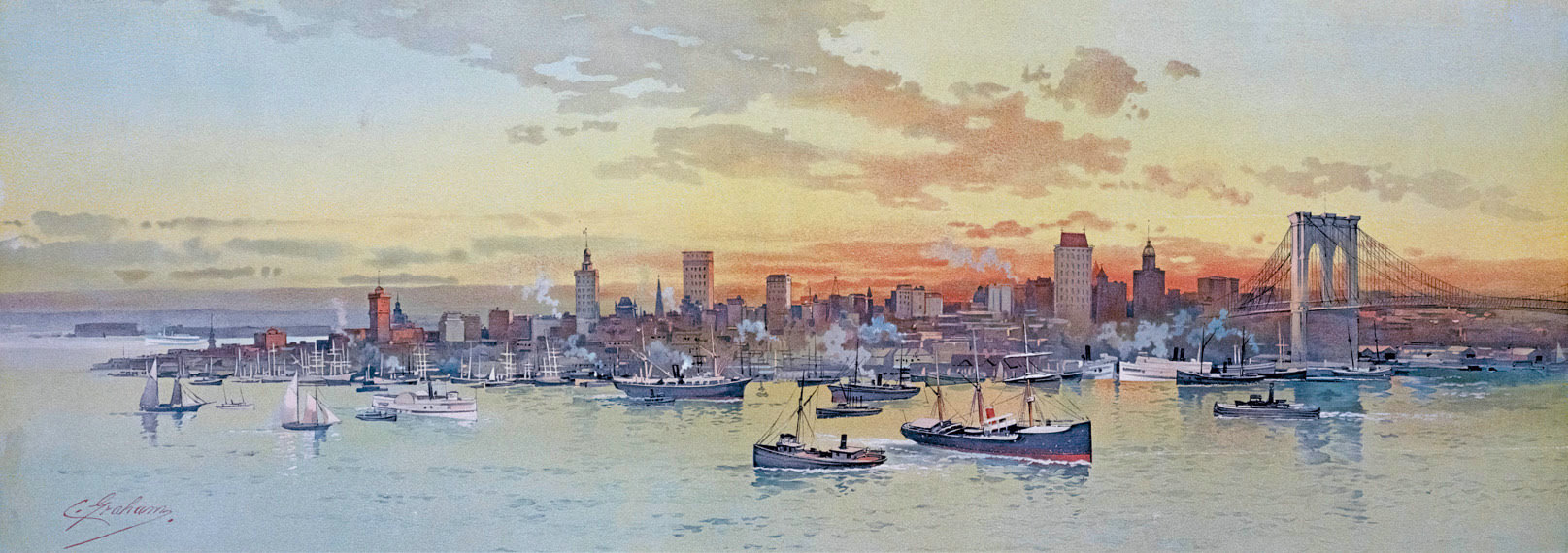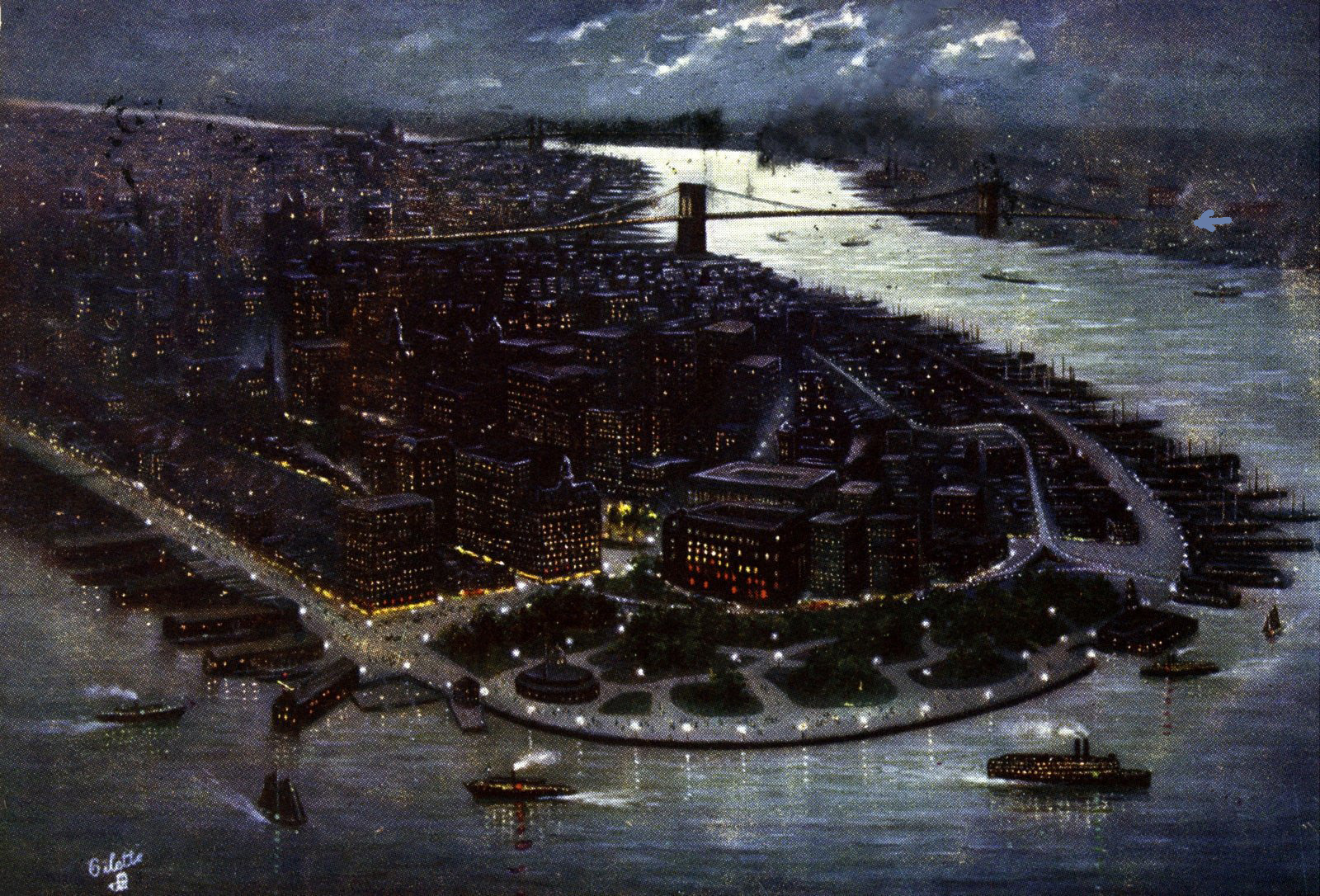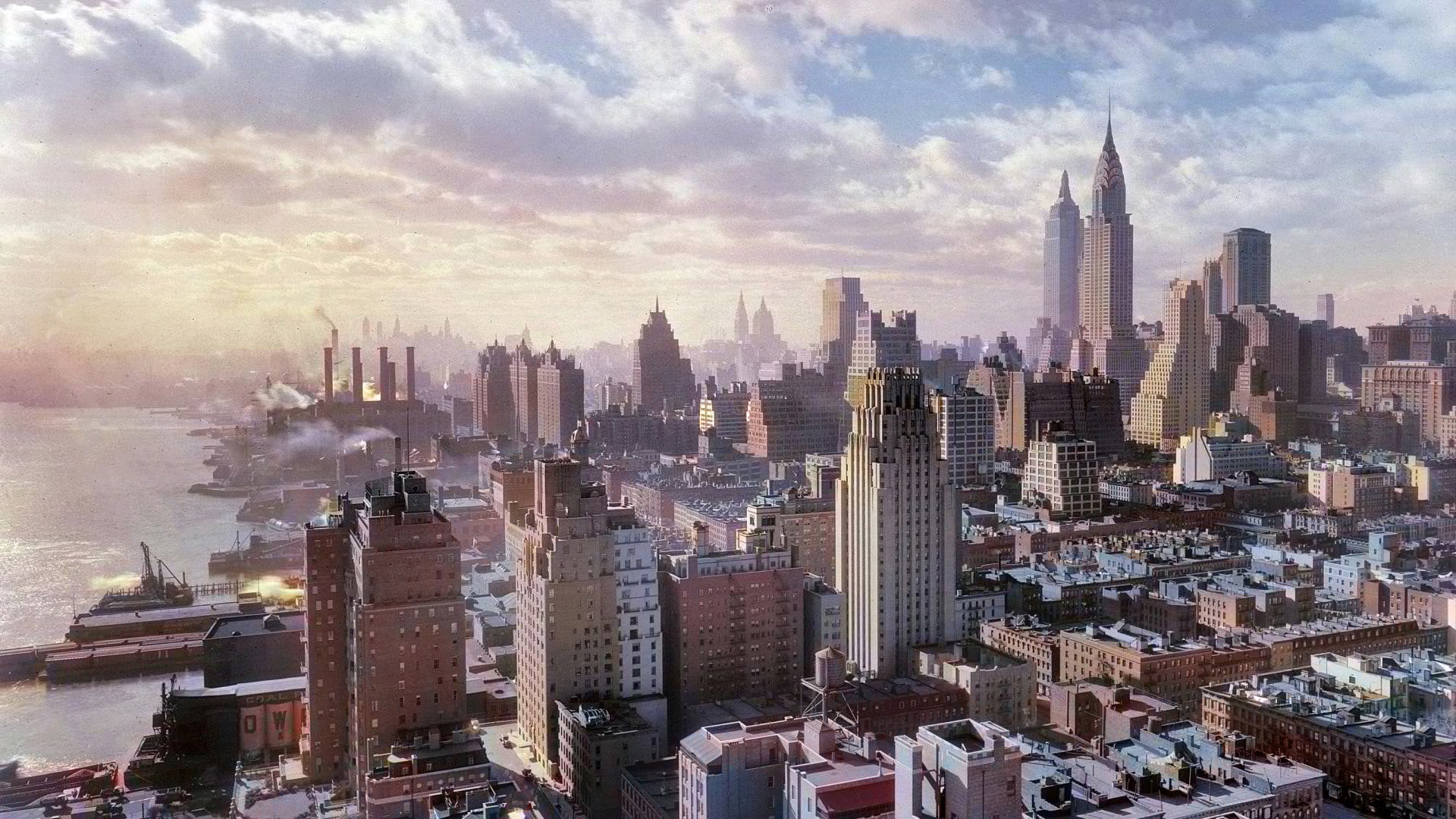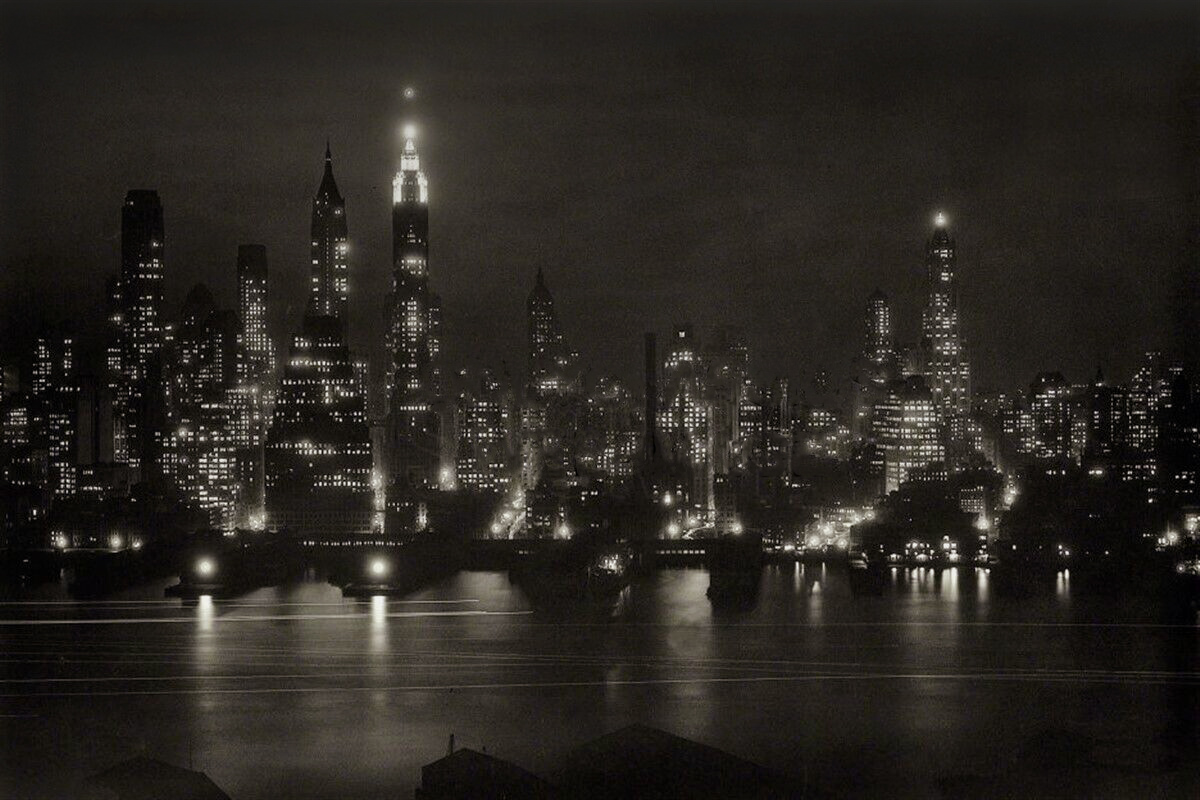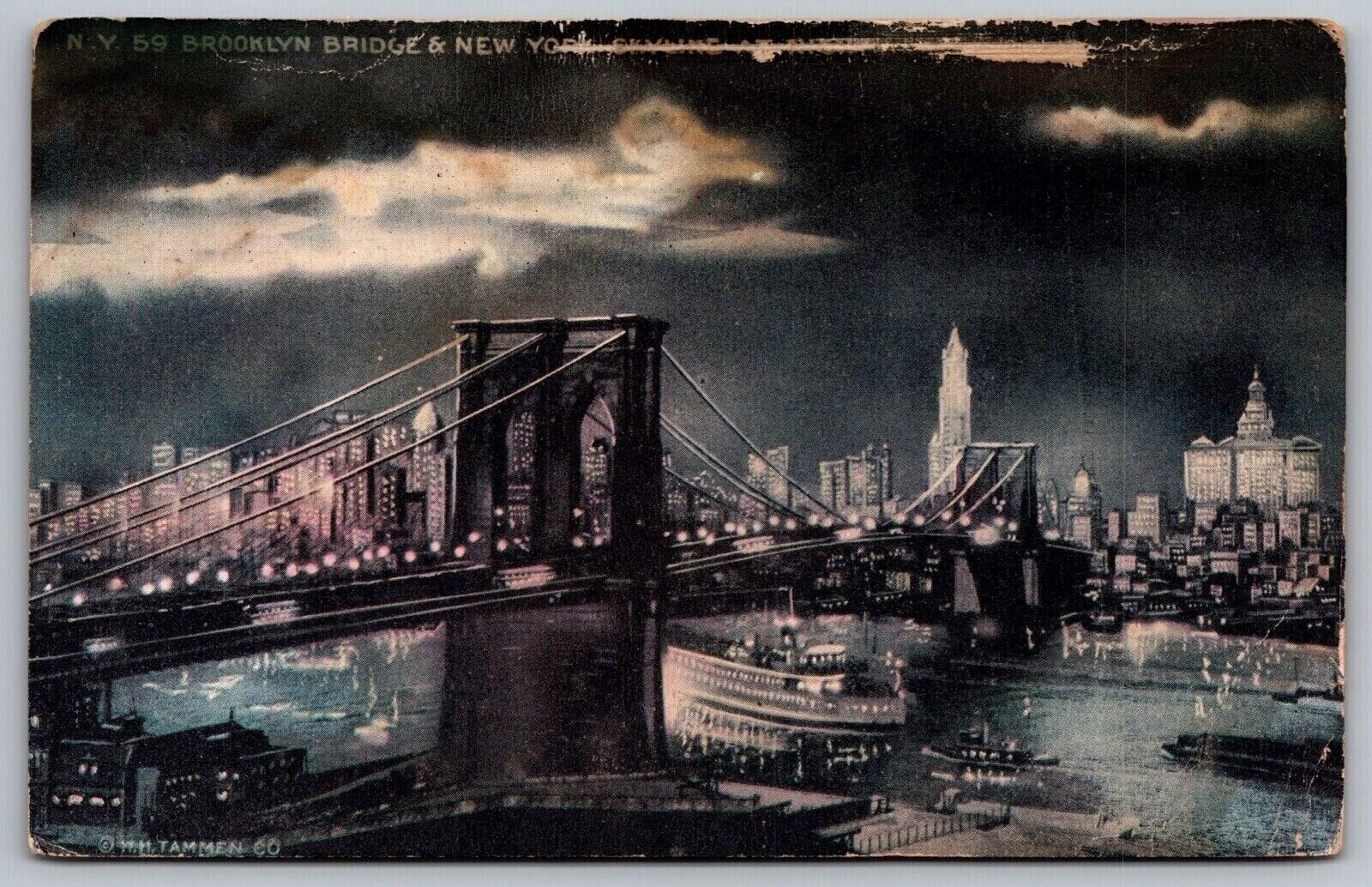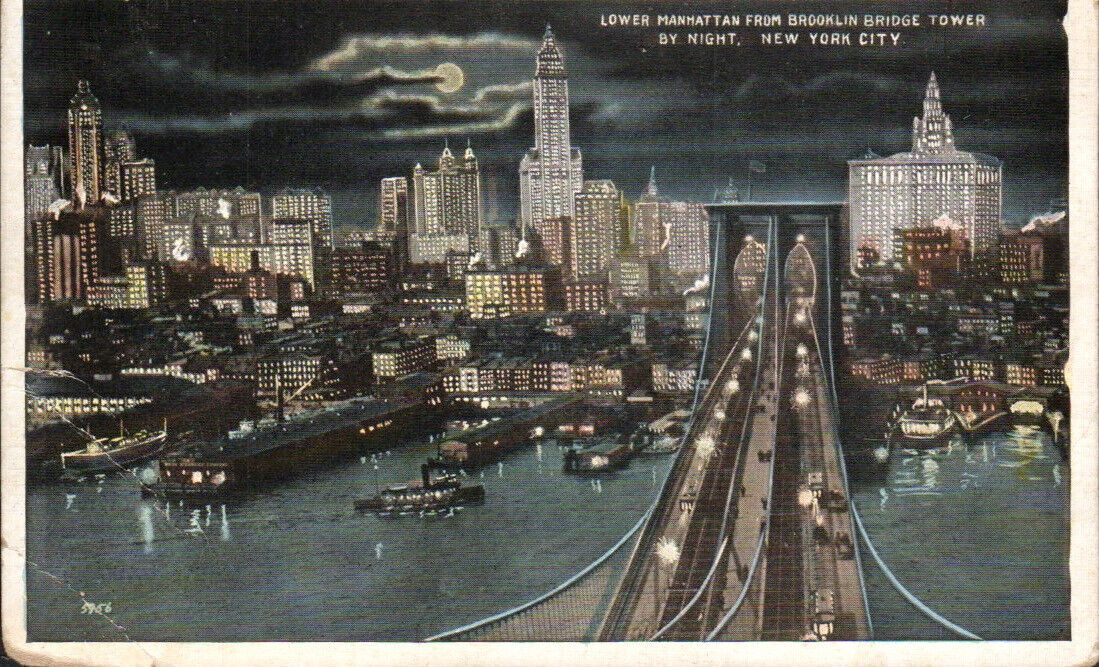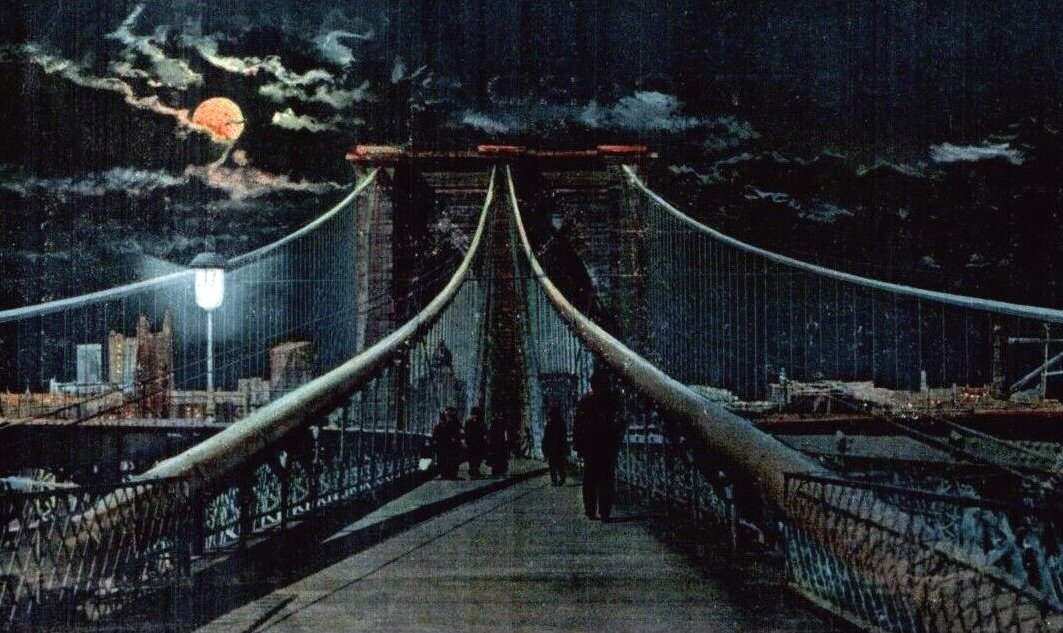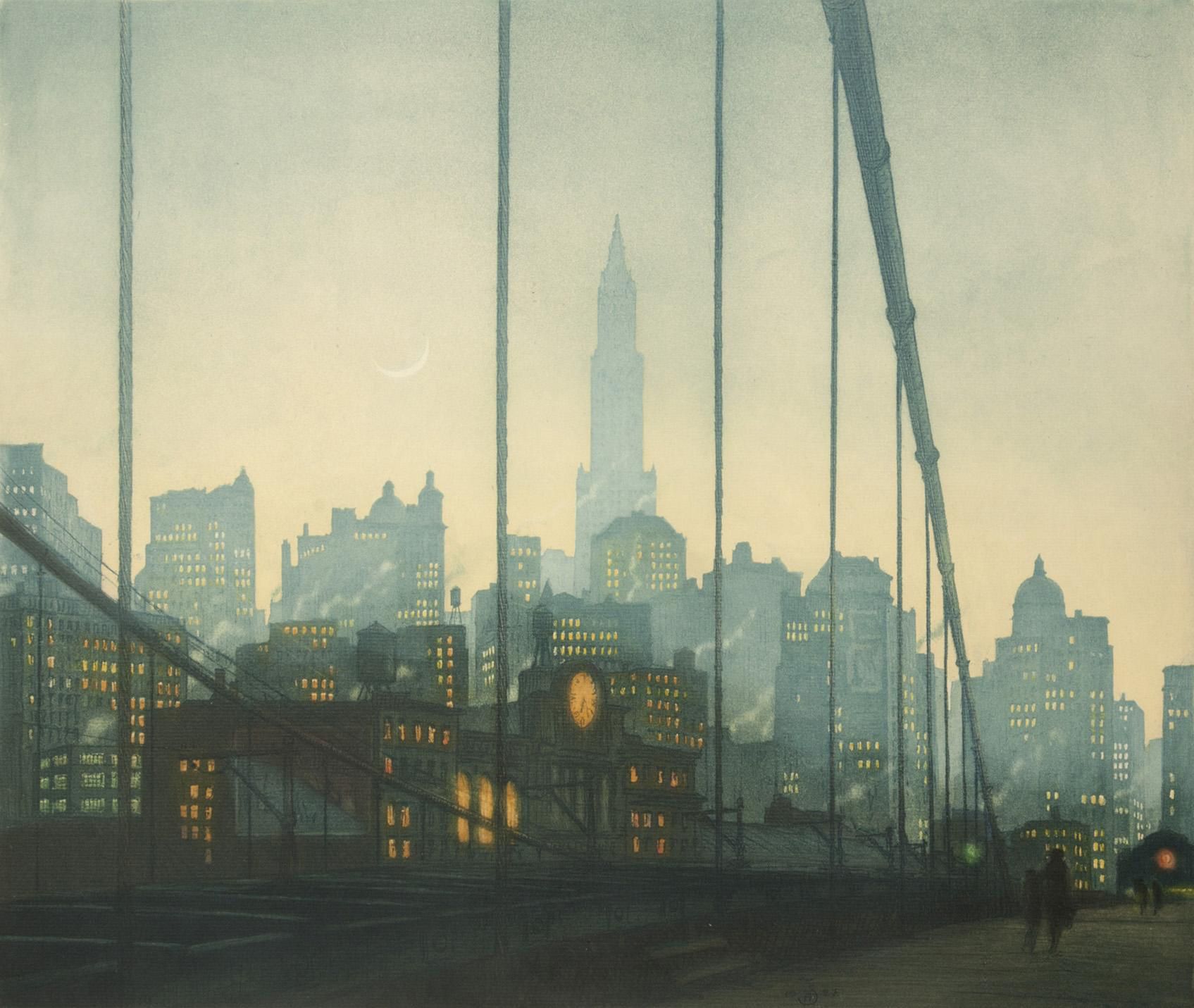This week on “‘Picture Postals’ from Lovecraft”, I have another try at finding his first grand sweeping view of New York City. Specifically the elevated view he saw at night of the New York City sky line.
As readers will recall, Lovecraft’s short New York story “He” opens with this vision of…
Coming for the first time upon the town, I had seen it in the sunset from a bridge, majestic above its waters, its incredible peaks and pyramids rising flower-like and delicate from pools of violet mist to play with the flaming golden clouds and the first stars of evening. Then it had lighted up window by window above the shimmering tides where lanterns nodded and glided and deep horns bayed weird harmonies, and itself become a starry firmament of dream, redolent of faery music, and one with the marvels of Carcassonne and Samarcand and El Dorado and all glorious and half-fabulous cities.
Later, as his deep disillusion set in, the vision became one of…
… Cyclopean modern towers and pinnacles that rise blackly Babylonian under waning moons” […] “a hellish black city of giant stone terraces with impious pyramids flung savagely to the moon, and devil-lights burning from unnumbered windows.
In his letters Lovecraft records several initial real-life “faery” views of the city, seen with either his friend Loveman or the poet Hart Crane or both. His key early view was from the roof above Hart Crane’s rooms at 110 Columbia Heights (the same rooms that had once been those of the crippled creator of the great Brooklyn Bridge). These gave a fine view both of the famous Bridge, the river and the Lower Manhattan sky-line. The building, a “brownstone” as New Yorkers called them, is now apparently demolished. But his key view was from the roof rather than the windows…
my first sight of the illuminated Manhattan skyline [being] from its roof!”
I looked at Crane’s the exact location in last summer’s ‘Picture postals’ from Lovecraft – the view from Columbia Heights. Of the view from his windows, I’ve since found that Crane wrote in a letter…
Just imagine looking out your window directly on the East River with nothing intervening between your view of the Statue of Liberty, way down the harbour, and the marvellous beauty of Brooklyn Bridge close above you on your right! All of the great new skyscrapers of lower Manhattan are marshalled directly across from you, and there is a constant stream of tugs, liners, sail boats, etc in procession before you on the river! It’s really a magnificent place to live.
Charles Graham’s illustrator’s view. Said to be 1896, but the Statue of Liberty is missing?
Judging by Internet searches there appear to have been various early attempts to picture the scene at night, though with limited success in photography due to the limitations of the era. Early masters like Alfred Stieglitz don’t appear to have tried to picture this particular view at night. Or if they did try, then the results are not online. Nor can any suitable b&w ‘nocturne’ lithograph of the view be found.
But some postcard creators, and their expert over-painters, did try.
But first some orientation. I’d say my arrow, seen on this Oilette card, about indicates the direction of view from Crane’s place.
Here we see the view of the towers of Lower Manhattan sketched in profile in the 1930s, after the Empire State building had arisen in 1930-31.
And a 1930s side view in fine photography.
Now a 1933 night dock-side view of Lower Manhattan. Close to what Lovecraft saw, but from too low an angle and probably too built-up compared to the 1920s. Those were the days before bamboozling bureaucrats and nay-sayers, when it might only take a year to build a New York City skyscraper. Some things about the skyline would have changed by 1933.
Here we see two early attempts at elevated-view over-painted night pictures, possibly from the 1900s-1910s. The sky line was then much lower. Crude pictures by the standards of our time, but not by theirs. And you have to admire the expertise of the over-painters who could turn day into night.
Some vintage night cards show the bridge itself at night, or pedestrians crossing it on the elevated ‘seagull level’ footway. Presumably the footway is what Lovecraft alludes to in the opening of “He”, when he writes… “I had seen it [the city sky line] in the sunset from a bridge”.
But painters rather than photographers did far better at depicting something of Lovecraft’s initial “faery” view of the towers from the bridge, as in this sunset view from the end of the bridge by T.F. Simon in 1927. This comes somewhat close I think, to the opening lines of “He”.
A fine picture, but I’m still hoping to find a really good ‘Lower Manhattan from Columbia Heights’ early/mid 1920s photographic view at night.
Incidentally, I found a “night over-paint” of the view down Fulton Street. A key Lovecraft stamping-ground is in the first part of the road that runs into the upper-left of the card.

